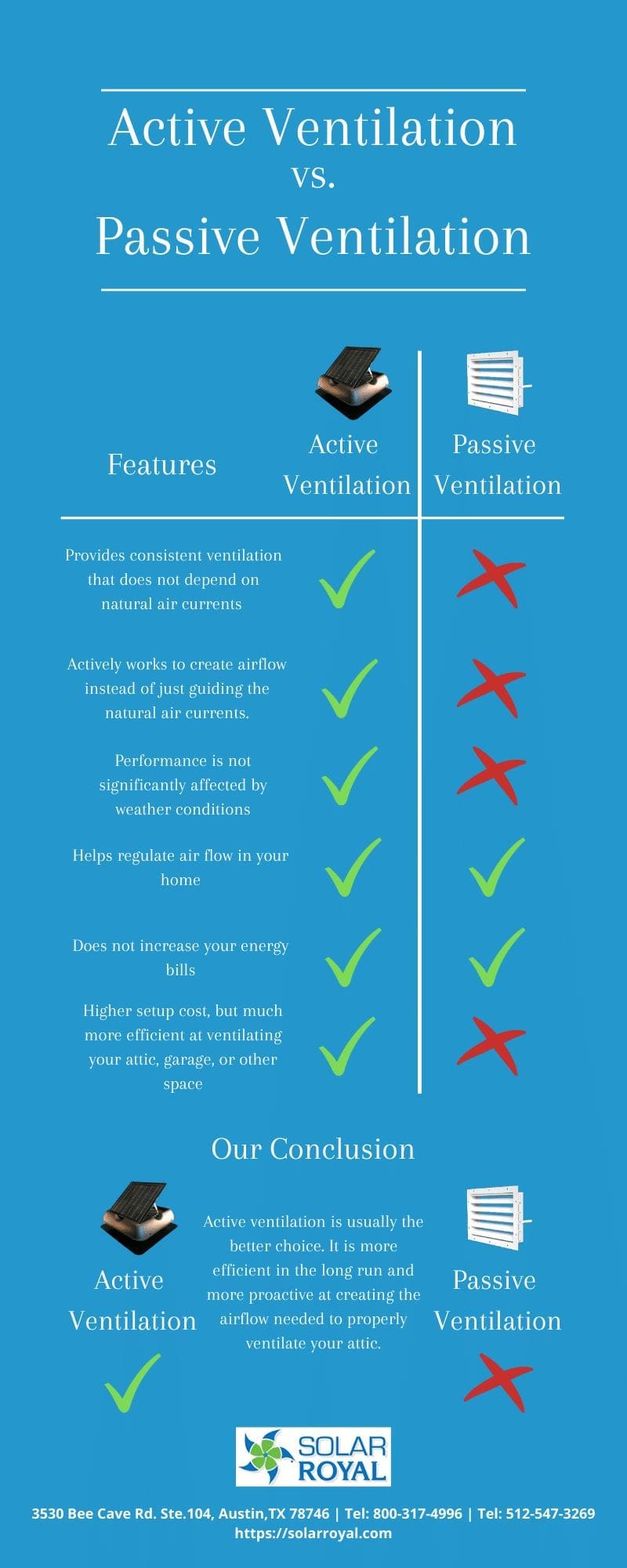Do you have an attic, garage, or other space that needs ventilation? If you do, you’re in the right place. When looking for a ventilation system, there are so many options, and it can be hard to know which one to choose. So we’re going to break down some of the basics for you to help you make an informed decision when shopping for a new ventilation system. The biggest question you need to answer is: do I need active ventilation or passive ventilation? But before you can answer that, you need to know the difference between active and passive ventilation. That’s where we can help.

What is Active Ventilation?
Active ventilation systems provide air circulation in indoor spaces using mechanical fans. This type of ventilation is essential for spaces that are prone to collecting excess heat. Spaces with excess moisture buildup also benefit from additional ventilation. It also helps keep your home free from potential harmful odors and gasses that may build up where chemicals, equipment, and even vehicles are stored.
Pros and Cons of Active Ventilation
Active ventilation provides a more consistent ventilation system for your home or business. It does not depend on natural air currents. Instead, it actively works to create airflow through your attic or garage space. For these reasons, weather affects active ventilation is far less. If you choose a system like the Solar Royal SR1800, you won’t have to worry about increased energy bills. As a 100% solar-powered unit, the SR1800 keeps the air in your garage, attic, or other space properly circulated without adding to your carbon footprint. Active ventilation systems often have a slightly higher setup cost than passive systems. However, increased efficiency and performance offset this cost.
What is Passive Ventilation?
Passive ventilation systems provide air circulation through natural methods such as thermal buoyancy and air currents. This type of system uses air vents like the WindeeVent System to control and guide air circulation. A passive system such as this regulates air temperature. It brings in fresh air while pushing out the old stale air.
Pros and Cons of Passive Ventilation
Passive ventilation systems are less consistent than active ventilation systems due to their reliance on natural air currents. As their name implies, passive systems do not actively create ventilation for your attic or garage. They merely guide the air currents that already exist. They leverage these air currents to draw in fresh air while pushing out old stale air. For this reason, passive systems are more susceptible to the effects of weather. Air currents change as the weather changes. Passive ventilation systems cannot create more air currents to compensate for the lack of airflow. Like active ventilation systems, passive systems do not increase your energy bills or add to your carbon footprint. They often have a lower setup cost than an active ventilation system. However, this price difference reflects the efficiency of the system.
Our Conclusion
Active ventilation is usually the better choice. It is more efficient in the long run and more proactive at creating the airflow needed to properly ventilate your attic. Learn more about the best active ventilation system on the market today, our SR1800 Solar Attic Ventilation Fan. If you have more questions, feel free to contact one of our ventilation experts via Live Chat, our Support Desk Ticketing System, or Phone during office hours.
